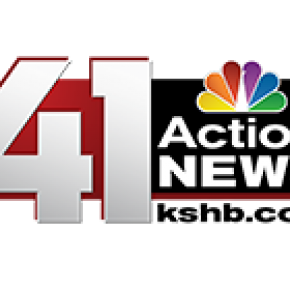More Cities Should Do What States and Federal Government Aren't on Minimum Wage
More Cities Should Do What States and Federal Government Aren't on Minimum Wage
Source: Gotham Gazette
Early...
Source: Gotham Gazette
Early this month, New York City Mayor Bill de Blasio announced a guaranteed $15 minimum wage for all city government employees by the end of 2018. This is a big win for over 50,000 workers across the city struggling to provide for their families, including those directly on the payroll and tens of thousands working at non-profits that contract with the city.
Unlike in Seattle and Los Angeles, where city officials are empowered to raise the minimum wage for the entire workforce in their cities, Mayor de Blasio is unable to unilaterally raise wages for all New York City workers. That power lies with Gov. Andrew Cuomo and the state legislature. The governor's efforts to lift the minimum wage to $15 are being hampered by a Republican-controlled state Senate.
De Blasio's decision to raise wages for city employees is a crucial independent step towards a more equitable city - and should be seen as an inspiration for cities around the nation. It also reflects the power and momentum of a groundbreaking worker-led countrywide movement demanding higher wages.
Even as state and federal administrations drag their feet on the inevitable question of a decent minimum wage for working families in the United States, de Blasio's gutsy move shows cities can and should take matters into their own hands.
The mayor's minimum wage raise closely follows his announcement last month giving six weeks paid parental leave, and up to 12 weeks when combined with existing leave, to the city's 20,000 non-unionized employees. The mayor has now moved to negotiate the same benefits with municipal unions. Again, New York City private sector workers must look to Albany or Washington, D.C. to move on paid family leave for all.
Mayor de Blasio's recent actions support his goal of lifting 800,000 New Yorkers out of poverty over ten years. More than 20 percent of the city's population lives in poverty, a huge swath of a city commonly associated with extraordinary wealth.
The last couple of years have seen unparalleled momentum from workers themselves - from New York City to Los Angeles and Chicago - calling for livable wages, resulting in minimum wage raises for fast food workers and other groups.
Workers are not waiting patiently on government officials – they are organizing in an unprecedented way. Progressive mayors like de Blasio are responding with sound policy, while less responsive officials are being put on notice. Cities like Los Angeles, New York City, and Chicago are paving the way, showing that it is possible to act independently of state and federal governments.
In addition, laws raising the minimum wage to more than the pitiful federal standard of $7.25 an hour have passed in a number of states. There are now campaigns to raise the floor and standards for workers being led in 14 states and four cities. This momentum is building into a crescendo that will have deep implications for the 2016 presidential election.
Nearly half of our country's workers earn less than $15 an hour and 43 million are forced to work or place their jobs at risk when sick or faced with a critical care-giving need. Now is the time for cities to listen to their workers and override state and federal passivity to allow millions of hard-working Americans to provide for their families.
Detener los préstamos de día de pago es apenas el inicio
En los últimos años, se han incrementado las críticas contra los préstamos de día de pago por explotar a los prestatarios de bajos ingresos y atraparlos en un ciclo de endeudamiento. El problema...
En los últimos años, se han incrementado las críticas contra los préstamos de día de pago por explotar a los prestatarios de bajos ingresos y atraparlos en un ciclo de endeudamiento. El problema ha alcanzado tal magnitud, que este verano, la Oficina de Protección Financiera del Consumidor (Consumer Financial Protection Bureau o CFPB) propuso nuevas normas para acabar con las prácticas más abusivas en este sector.
Sin embargo, los prestamistas de día de pago no son los únicos que lucran con las dificultades de las comunidades de bajos ingresos al otorgarles préstamos engañosos que a menudo hacen que la gente termine con deudas abrumadoras. De hecho, esas prácticas orientadas a grupos de bajos ingresos se han vuelto comunes en muchos sectores económicos, desde préstamos hipotecarios hasta financiamiento para estudios universitarios.
Durante décadas, prácticas discriminatorias en ciertos vecindarios les negaron a las personas de color acceso a préstamos hipotecarios, cuentas de banco y otros servicios importantes. Hoy en día, se hace lo mismo con esquemas engañosos de préstamo que les niegan a mujeres negras y latinas la oportunidad de una vida mejor.
Un informe reciente subraya el impacto que dichas prácticas han tenido en las mujeres de color. Entre otros datos alarmantes, el informe indica que 6 de cada 10 clientes de préstamos de día de pago son mujeres, que la probabilidad de que las mujeres de raza negra reciban un préstamo con tasa no preferencial es 256% más alta que la de hombres blancos de las mismas características y que las mujeres de color terminan pagando deudas estudiantiles durante mucho más tiempo que los hombres. El estudio, encargado por la Alliance of Californians for Community Empowerment, New Jersey Communities United e Isaiah, un grupo religioso en Minnesota, también prueba que las prácticas agresivas en préstamos, desde aquellos contra el cheque de pago hasta hipotecas con tasas altas, han aumentado considerablemente en años recientes. Muchos estudios han demostrado que se manipula a prestatarios con una buena historia crediticia, particularmente mujeres negras y latinas, para que saquen préstamos con intereses altos incluso cuando reúnen los requisitos para tasas más bajas.
Las mujeres de color son vulnerables a prestamistas de dudosa reputación debido a que el racismo y sexismo del sistema de por sí pone a muchas mujeres en una posición económica precaria. Cada vez más, se ha empujado a las mujeres a aceptar trabajos con poco control y paga. En la fuerza laboral con sueldos bajos predomina la mujer, y la brecha salarial entre los sexos afecta mucho más a las mujeres de color. En el año 2014, las mujeres de raza negra ganaban 63% de los ingresos de hombres blancos, y las latinas, 54%. Muchas mujeres de color, estancadas en empleos con poca paga, horarios imprevisibles y pocas oportunidades de superarse, se ven forzadas a sacar préstamos simplemente para subsistir o tratar de mejorar su desesperada situación.
Durante demasiado tiempo, se ha permitido que proliferen los préstamos usurarios y otras prácticas empresariales que les niegan oportunidades a comunidades y explotan a los más vulnerables en términos económicos. El mes pasado, la Consumer Financial Protection Bureau comenzó a tomar medidas contra los préstamos de día de pago o garantizados con títulos de propiedad de autos, pero es necesario hacer más. Las entidades normativas deben asegurarse de que todos los préstamos tomen en cuenta la capacidad del prestatario de pagar la deuda y de que los prestamistas no vayan en pos de los menos protegidos desproporcionadamente y traten de lucrar con ellos.
Las normas para préstamos de día de pago del mes pasado muestran claramente un ímpetu en combatir los préstamos cada vez más abusivos de los banqueros. Estas normas son un paso en la dirección correcta, pero no van suficientemente lejos. Estamos avanzando, pero queda mucho por hacer para asegurar que no se explote a las mujeres negras y latinas con esta versión de discriminación del siglo XXI.
Por Marbre Stahly-Butts
Source
El premio de la diáspora boricua
“En el noreste, grupos de poder inmigrante como Make the Road, afiliadas al Center for Popular Democracy, organizan a estas comunidades en Nueva York, Connecticut, Pensilvania y Nueva Jersey para...
“En el noreste, grupos de poder inmigrante como Make the Road, afiliadas al Center for Popular Democracy, organizan a estas comunidades en Nueva York, Connecticut, Pensilvania y Nueva Jersey para crear un poder amplio en las minorías de esa parte de los EE.UU. Por otro lado, se han formado coaliciones nacionales como Power4Puerto Rico, que agrupan a muchos de estos grupos, incluyendo al Hispanic Federation, para cabildear por políticas públicas que tendrán un impacto directo en los puertorriqueños viviendo en la diáspora.
Lea el artículo completo aquí.
Coalition Calls for Racial Equality in Kansas City Economy
KSHB - March 5, 2014 - Following a Department of Justice report showing the Ferguson Police Department unfairly targeted African-Americans, a Kansas City coalition says there are racial...
KSHB - March 5, 2014 - Following a Department of Justice report showing the Ferguson Police Department unfairly targeted African-Americans, a Kansas City coalition says there are racial inequalities right here.
They say a recent economic report shows twice as many African-Americans in Kansas and Missouri are unemployed than white residents and that wages are too low to support a family.
"Our purpose here today is to call for a moral economy where wages actually provide hope for workers and their families,” Stan Runnels, a priest and CCO member, said.
The group is asking policy makers for a change.
Source
The Fed has a rare chance to prove it's not Wall Street's bank

The Fed has a rare chance to prove it's not Wall Street's bank
William Dudley, president of the Federal Reserve Bank of New York, is retiring early, creating another vacancy at a central bank already in a flux of personnel changes. Here’s a suggestion to the...
William Dudley, president of the Federal Reserve Bank of New York, is retiring early, creating another vacancy at a central bank already in a flux of personnel changes. Here’s a suggestion to the the New York Fed’s board of directors, which will select Dudley’s successor: Try to avoid picking another banker.
Read the full article here.
After Volkswagen scandal, can consumers trust anything companies say? (+video)
After Volkswagen scandal, can consumers trust anything companies say? (+video)
Adam Galatioto’s loyalty to diesel Volkswagens predates his ability to drive.
The 29-year-old’s parents first bought a Jetta TDI in 1998, and he drove the little...
Adam Galatioto’s loyalty to diesel Volkswagens predates his ability to drive.
The 29-year-old’s parents first bought a Jetta TDI in 1998, and he drove the little sedan through high school, college, and a master’s program before selling it in 2013. Mr. Galatioto and his girlfriend now share a 2011 Jetta TDI SportWagen, which he helped encourage her to buy.
“They get really good mileage,” he says. “Mine got 50 m.p.g. on the highway. By proxy that means you are being environmentally friendly.”
He’s not alone. Volkswagen has long enjoyed a reputation for reliable engineering, cheerful affordability, and, largely thanks to its efforts in clean diesel, sustainability. In Consumer Reports’ 2014 survey on how people perceive leading car brands, the German automaker was singled out (alongside Tesla) for its fuel efficiency.
That made recent revelations that VW had duped environmental regulators for years, installing software on 11 million diesel vehicles worldwide allowing them to run cleaner during emissions tests than they did on the road, all the more unnerving.
“I don’t generally trust corporations on what they say, and this was so intentionally devious it just lumps them in with any other car company for me,” Galatioto says.
This is a worst-nightmare scenario for companies trying to attract customers that increasingly want to make not just quality or affordable purchases, but ethical ones. It’s an impulse nearly every consumer industry is racing to capitalize on, from restaurant chains shifting to cage-free eggs and fair-trade coffee to retailers pledging to raise wages and give workers more predictable scheduling.
But with such promises being made left and right, and especially in the wake of Volkswagen’s fall, conscientious consumers may be wondering: Can any of them really be trusted?
Not always, clearly, but there is some comfort to be had on that front. Brands that fail to deliver risk even greater financial and reputational fallout than ever before (Volkswagen lost a third of its stock value when the scandal broke, and it faces billions in future losses from EPA fines, repairs, and lost sales). Combined with effective third-party oversight, it’s a powerful motivator for companies on the whole to behave better, experts say.
Consumers, particularly younger ones, are armed with easier access to information about what they buy than previous generations, and it’s affecting their choices. Millennials (adults ages 21 to 34) are more than twice as likely as their Gen-X and baby boomer counterparts to be willing to pay extra for products and services billed as environmentally and socially sustainable, according to a 2014 Nielsen survey. They are equally more prone to check product labels for signs of sustainable and ethical production.
“There’s an increased attention to more intangible characteristics of a product,” says Dutch Leonard, a professor who teaches corporate responsibility and risk management at Harvard Business School. “When I buy a shirt, it has a particular color, it’s soft, or wrinkle-free. But now people are also paying attention to where it was made, if the workers are being exploited, and if the company is environmentally conscious or not.”
This makes responsible changes effective marketing tools, which can create domino effects as companies try to keep up with and outdo standards in their particular industries. When Wal-Mart, the biggest retailer in the world, raised its minimum pay rate at the beginning of this year, competitors such as Target and Kohl’s quickly followed suit. The success of Chipotle, which has a carefully detailed food-sourcing policy, has been followed by major supply chain overhauls for McDonald’s, General Mills, and other giants of the corporate food world.
“Customers want 'food with integrity,' ” Warren Solochek, a restaurant-industry analyst with NPD Group, a market-research firm, told the Monitor in May. “[Companies] that choose locally sourced, fresh ingredients can put that on their website and know that people are looking at it.”
But especially for major corporations, “when you say you are doing things, you will attract attention from outside business groups," Professor Leonard says. "You can bet some NGO [nongovernmental organization] is going to try and figure out if that’s true or not.”
Indeed, Volkswagen isn’t the first brand to have its positive positioning face pushback, especially as global companies work to strike an operational balance between ethics and profitability. Wal-Mart’s wage hikes were followed by cutbacks in worker hours when the retailer’s earnings suffered, a move that led labor advocacy groups to call the earlier wage hikes “a publicity stunt.” Earlier this week, the Center for Popular Democracyreleased a report showing that Starbucks has so far failed to live up to a much-publicized vow from a year ago to give workers more consistent schedules.
While Volkswagen eluded the Environmental Protection Agency, it was eventually found out by the International Council on Clean Transportation, an independent nonprofit aided by researchers at West Virginia University.
In addition to catching such discrepancies, watchdog groups can be helpful in weeding out credible claims of positive change from the less so. In the mid-2000s, the Unions of Concerned Scientists’ annual environmental consumer guide largely dispelled the idea that washable cloth diapers are significantly better for the environment than disposable ones.
Furthermore, some major corporations and industry groups have partnerships with independent, NGO-like organizations to set ethical industry standards and submit to outside monitoring. Unilever, for example, teamed up with the the World Wide Fund for Nature (WWF) in the 1990s to create the Marine Stewardship Council, a certification program for sustainable fisheries. In 2008, Starbucks embarked on a decade-long project with Conservation International to improve the sustainability of its coffee supply around the world. Home Depot sells lumber certified by an outside organization.
Such collaborations may not catch everything, Leonard says, but they are effective because they are “constructed in such a way that the [certification groups] are not beholden to an industry. We may not be able to get full agreement on the standards, but we might make real progress by creating safe harbors through development of standards that are negotiated in advance.”
Source: The Christian Science Monitor
Why markets ignore Trump news
ALSO TODAY: FED UP IN WYOMING — Per release: “On the eve of the Federal Reserve’s annual economic symposium in Jackson Hole, researchers, scholars, and workers will join Fed Up for a panel...
ALSO TODAY: FED UP IN WYOMING — Per release: “On the eve of the Federal Reserve’s annual economic symposium in Jackson Hole, researchers, scholars, and workers will join Fed Up for a panel discussion that will set the tone for this year’s theme: “Changing Market Structure and Implications for Monetary Policy.” Thursday, August 23 - 4:00 pm MDT. “Free Speech Area” directly in front of the Jackson Lake Lodge.
Read the full article here.
East Orange Officials Applaud Changes to Mortgage Sale Program Announced by HUD

East Orange Officials Applaud Changes to Mortgage Sale Program Announced by HUD
EAST ORANGE, NJ - The U.S. Department of Housing and Urban Development (HUD) has announced significant improvements to their delinquent mortgage sales program.
The changes include:
...EAST ORANGE, NJ - The U.S. Department of Housing and Urban Development (HUD) has announced significant improvements to their delinquent mortgage sales program.
The changes include:
· Making principal reduction the first strategy in modification processes
Sign Up for E-News
· Increased non-profit participation — with a goal of tripling the number
· Far greater provisions for transparency in the sale process
· A commitment to work with local governments and non-profits on targeted sales
These reforms come on the heels of an aggressive community pressure campaign, led by local elected officials affiliated with Local Progress, a national network of progressive elected leaders, and community groups affiliated with the Center for Popular Democracy.
The East Orange City Council passed a resolution sponsored by First Ward Councilman Christopher James in April 2016 calling on HUD to make reforms along these lines. In September of 2015, Councilman James traveled to Washington, D.C. to join others in meeting with top officials at HUD about this issue.
“This is one giant step in the right direction toward helping residents get back on their feet and rebuilding our communities,” said James. “Mutual understanding of the process and greater transparency will allow us to assist our residents in avoiding foreclosure.” As a city, East Orange has taken aggressive steps to reduce the lingering impact of the foreclosure crisis in its neighborhoods.
“My administration, with the support of the City Council, has taken progressive action to address the foreclosure crisis and stabilize our neighborhoods. In November 2014, we established a Division of Vacant and Abandoned Properties solely dedicated to identifying, registering and collecting fees and fines from agencies, such as banks and other creditors, who violate our city code,” said Mayor Lester E. Taylor III. “With these new reforms, we continue to take advantage of every opportunity – including the enforcement of new state laws – that will help us to revitalize our city, boost property values and restore community pride.”
Last summer, Local Progress members led a successful effort to get a resolution passed at the June meeting of the U.S. Conference of Mayors, calling on HUD to prioritize selling these troubled mortgages to mission-driven purchasers, not Wall Street speculators.
With public events, reports and lobbying, these leaders put HUD, and specifically its head Secretary Julián Castro, in the spotlight for running a program that has been benefitting Wall Street at the expense of communities. HUD’s “Distressed Asset Sales Program” (DASP) has been conducting bulk auctions of delinquent mortgages to the highest bidder, which has meant 98% of these troubled mortgages have been sold to Wall Street speculators. Local elected leaders and stakeholders now plan to make sure that HUD sells delinquent mortgage pools to mission-driven purchasers.
The persistence of local elected officials and community groups has paid off, and the major changes announced last week are proof of their hard work. This campaign proved particularly timely as prominent Wall Street speculator Blackstone has recently become the largest single family landlord in the country. With more homes in the hands of non-profits instead of Wall Street speculators, communities will gain further control over their neighborhoods and be less at the mercy of Wall Street. Leaders from the Center for Popular Democracy and Local Progress plan to continue to apply direct pressure on HUD on this issue, and continue the fight for housing justice and community control to strengthen and protect neighborhoods across the country.
By CONNIE JACKSON
Source
Puerto Ricans call for protest in Washington
“Convened by the Power4Puerto Rico coalition, refugees and civic and union groups have organized a day of protests - which could include acts of civil disobedience - and visits to offices of...
“Convened by the Power4Puerto Rico coalition, refugees and civic and union groups have organized a day of protests - which could include acts of civil disobedience - and visits to offices of members of Congress, to mark the six-month anniversary of the worst catastrophe the Island has faced in a century. The events, which begin on Monday evening, will be headed on Tuesday by a protest in front of the headquarters of FEMA in Washington DC, said Samy Nemir Olivares, spokesman for the Center for Popular Democracy.”
Read the full article here.
Protesters ask Fed to delay at Jackson Hole summit
About 50 demonstrators gathered in Jackson Hole, Wyoming, holding signs reading "whose recovery is this" and "how many jobs do I have to work to be middle class?" Surrounded by the protesters,...
About 50 demonstrators gathered in Jackson Hole, Wyoming, holding signs reading "whose recovery is this" and "how many jobs do I have to work to be middle class?" Surrounded by the protesters, Nobel laureate economist Joseph Stiglitz also lent his voice, saying "this is not the time" to tighten policy.
"We are not algorithms in your computers. We are real people with real bills and real responsibilities," said Rod Adams, a protester who added that he makes $10.10 per hour.
The Fed's plans to abandon its yearslong near-zero interest rate policy have taken a turn recently amid stock market volatility fueled by concerns about the Chinese economy. The U.S central bank in recent months said it saw a strengthening labor market, describing job gains as "solid" after its July policy meeting.
Two former top Fed officials told CNBC that the central bank needs to evaluate how best to boost conditions for workers. Based on the last few years, easy policy may not necessarily fuel wage and job gains, noted former Philadelphia Fed President Charles Plosser.
"It's very important that we look beyond what's happening now and are looking to the long run," he told CNBC from Jackson Hole on Thursday.
While the central bank takes worker concerns "very seriously," it needs to evaluate how best to boost employment and wages, said Randall Kroszner, a former Fed governor. He added that it cannot base its decision on the fundamentals of another economy.
"You can't have Fed policy responding to every bump and wiggle that are coming out of the markets," he told CNBC from Jackson Hole.
He added that a rate liftoff in September of December of this year could make sense without a "negative downward shock" to inflation.










12 hours ago
12 hours ago